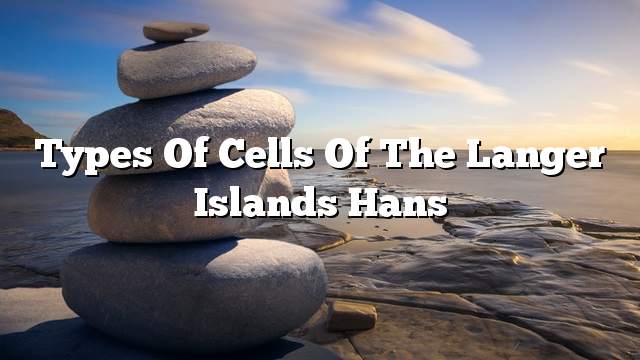Langer Islands Hans
The Islets of Langerhans are small clusters of cells in the pancreas that appear in small patches. Each group differs in shape and function from other cells. He was a German scientist Paul Langerhans, a scientist in autopsy and disease, in 1869 through a microscope. He was then 22 years old.
The Langer-Hans islands account for 1-2% of the pancreas, with a total mass of 1-1.5 grams. The number of these islands in the human pancreas is estimated at approximately 1 million, each with a diameter of 0.2 Mm, isolated from pancreatic tissues with high fibrous tissue.
Types of cells of the Langer Islands Hans
Alpha cells
These cells secrete the hormone “leukagon”, which works to release glucose stored in the muscles and liver to raise the level of sugar in the blood, to cover the need of the body of sugar (glucose). Alpha cells represent about 15-20% of the islands. Glucagon is sorted when the body’s cells need energy, when blood glucose is below the minimum. Blood glucose is the main catalyst for glucagon secretion of these cells (Langerhans ).
Beta cells
The secretion of insulin, a hormone secreted after eating foods and absorption of sugars and starches in the digestive system. The high blood glucose after eating and absorption process is the main catalyst for the secretion of insulin hormone from the islands of Langerhans.
Insulin reduces blood sugar because it is a stimulant of the cell walls. In other words, it stimulates the cell wall to receive glucose from the blood to enter the cell to perform oxidation of glucose for energy. These cells form about 65-80% Hans.
Delta cells
They are cells that secrete “somatostatin”, a hormone that reduces gastrointestinal activity in the intestines and stomach.
Cells (PP = polypeptide)
The cells that secrete the pancreatic protein called polypeptide, which regulates pancreatic function as well as regulates glycogen storage in the liver.
Epsilon cells
Gherlin, the first hormone to regulate hunger, was discovered in 1999. The smallest part of the islands is 1 percent or less of total island cells.
